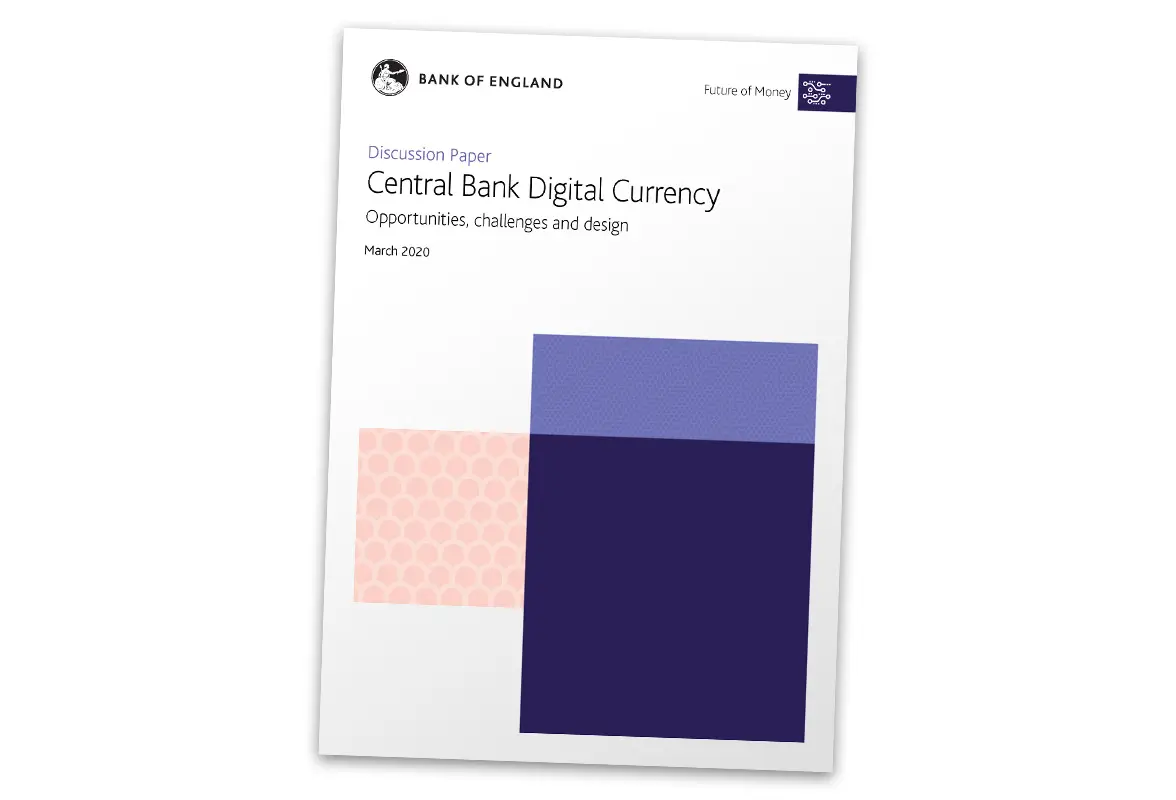
Financial inclusion, creating a competitive ecosystem, comparison with other payment innovations, user privacy and monetary and financial stability will be the five core principles that guide the Bank of England’s future exploration and development of a central bank digital currency (CBDC) in the UK, the financial institution has revealed.
The bank has drawn up the principles based on stakeholder feedback to its March 2020 discussion paper about the possible introduction of a digital pound which, it says, shows “strong agreement that the bank should, at the very least, be carefully studying CBDC.”
The Bank of England has now published a summary of the results of that discussion, identifying the following as its working principles for the next stage of its CBDC project:
- Financial inclusion should be a prominent consideration in the design of any CBDC.
- A competitive CBDC ecosystem with a diverse set of participants will support innovation and offer the best chance to deliver the benefits of CBDC.
- In assessing the case for CBDC, the bank should assess whether non-CBDC payment innovations could deliver the same benefits.
- A CBDC should seek to protect users’ privacy.
- While CBDC should ‘do no harm’ the bank’s ability to meet monetary and financial stability, opportunities to meet our policy objectives more effectively should also be considered in CBDC exploration.
“The bank now intends to deepen its exploration of CBDC. It will do so through three new initiatives,” the Bank of England says.
“First, a joint taskforce has been established with HM Treasury to ensure a coordinated approach to exploring the public policy issues around CBDC by UK authorities.
“Second, a CBDC Engagement Forum is being established to engage senior stakeholders across industry, academia and civil society on the practical challenges of designing, implementing and operating a CBDC.
“And, third, a CBDC Technology Forum will be set up to ensure the bank understands the state-of-the-art when considering all technology aspects of CBDC.”
The publication of the findings from the March 2020 discussion paper comes as the bank also launches a new discussion paper that outlines its “emerging thoughts” on digital money, including stablecoins and CBDCs.
‘New forms of digital money’ will be available for comment and discussion by stakeholders from the payments industry, technology providers, payments users, financial institutions, academics and other interested parties for three months.
“We live in an increasingly digitalised world where the way we make payments and use money is changing rapidly,” Bank of England governor Andrew Bailey says.
“The prospect of stablecoins as a means of payment and the emerging propositions of CBDC have generated a host of issues that central banks, governments, and society as a whole, need to carefully consider and address.
“It is essential that we ask the difficult and pertinent questions when it comes to the future of these new forms of digital money.”
The Bank of England and the UK Treasury launched its CBDC taskforce in April.
Next: Visit the NFCW Expo to find new suppliers and solutions